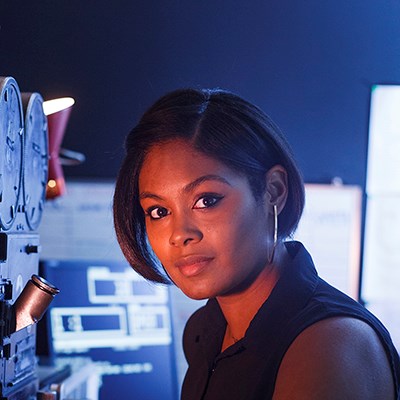
Vashti Harrison (Film and Video MFA 14)
My graduate thesis film was about folklore and ghost stories as told through the voices of members of my mother’s family in Trinidad. There’s an element of narrative in my work, but it’s not purely narrative; there are no scripts or actors. It’s most easily referred to as “experimental” because, depending upon the story that I want to tell, it may take the form of a documentary on 16mm film or on video, or it may be a photo series, or take another form.
I applied to a lot of film schools and I got into a couple, but honestly, it was the moment I walked into CalArts that sealed the deal for me. CalArts is like its own little ecosystem and you feel that when you walk into the building. I came for a visit and tour on the admitted students weekend. Instantly, the atmosphere was inspiring. But the moment I felt it was a no-brainer, was when I saw the students’ work. I thought, “They have a great faculty here and if I have the opportunity to learn from them, and become part of a personal community with these people, my work will certainly expand and flow and change. It’s really impressive.”
The Program in Film/Video was most supportive of me and I grow a lot as an artist here. Having a mentor like Betzy Bromberg—the queen of experimental work in the program, and someone who knew my work and chose to be my mentor—was an invaluable experience. It was so important that I was in this Program because I’m a filmmaker, but I’m also an artist, trying to make those two things work together.